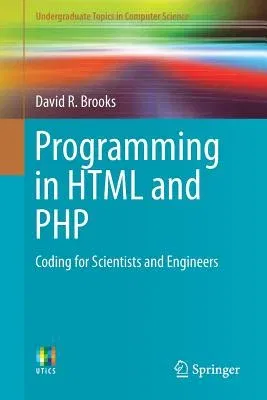This concise and accessible textbook will enable readers to quickly
develop the working skills necessary to solve computational problems in
a server-based environment, using HTML and PHP. The importance of
learning by example (as opposed to simply learning by copying) is
emphasized through extensive use of hands-on exercises and examples,
with a specific focus on useful science and engineering applications.
The clearly-written text is designed to be simple to follow for the
novice student, without requiring any background in programming or
mathematics beyond algebra.
Topics and features: describes the creation of HTML pages and the
characteristics of HTML documents, showing how to use HTML tables,
forms, lists, and frames to organize documents for use with PHP
applications; explains how to set up a PHP environment, using a local or
remote server; introduces the capabilities and syntax of the PHP
language, including coverage of array syntax and use; examines
user-defined functions in programming, summarizing PHP functions for
reading and writing files, viewing the content of variables, and
manipulating strings; reviews the PHP GD graphics library, presenting
applications for creating pie charts, bar graphs, and line graphs
suitable for displaying scientific data; includes appendices listing
HTML and ASCII special characters, and highlighting the essential basic
strategies for solving computational problems.
Supplying all of the tools necessary to begin coding in HTML and PHP,
this invaluable textbook is ideal for undergraduate students taking
introductory courses in programming. The book will also serve as a
helpful self-study text for professionals in any technical field.


